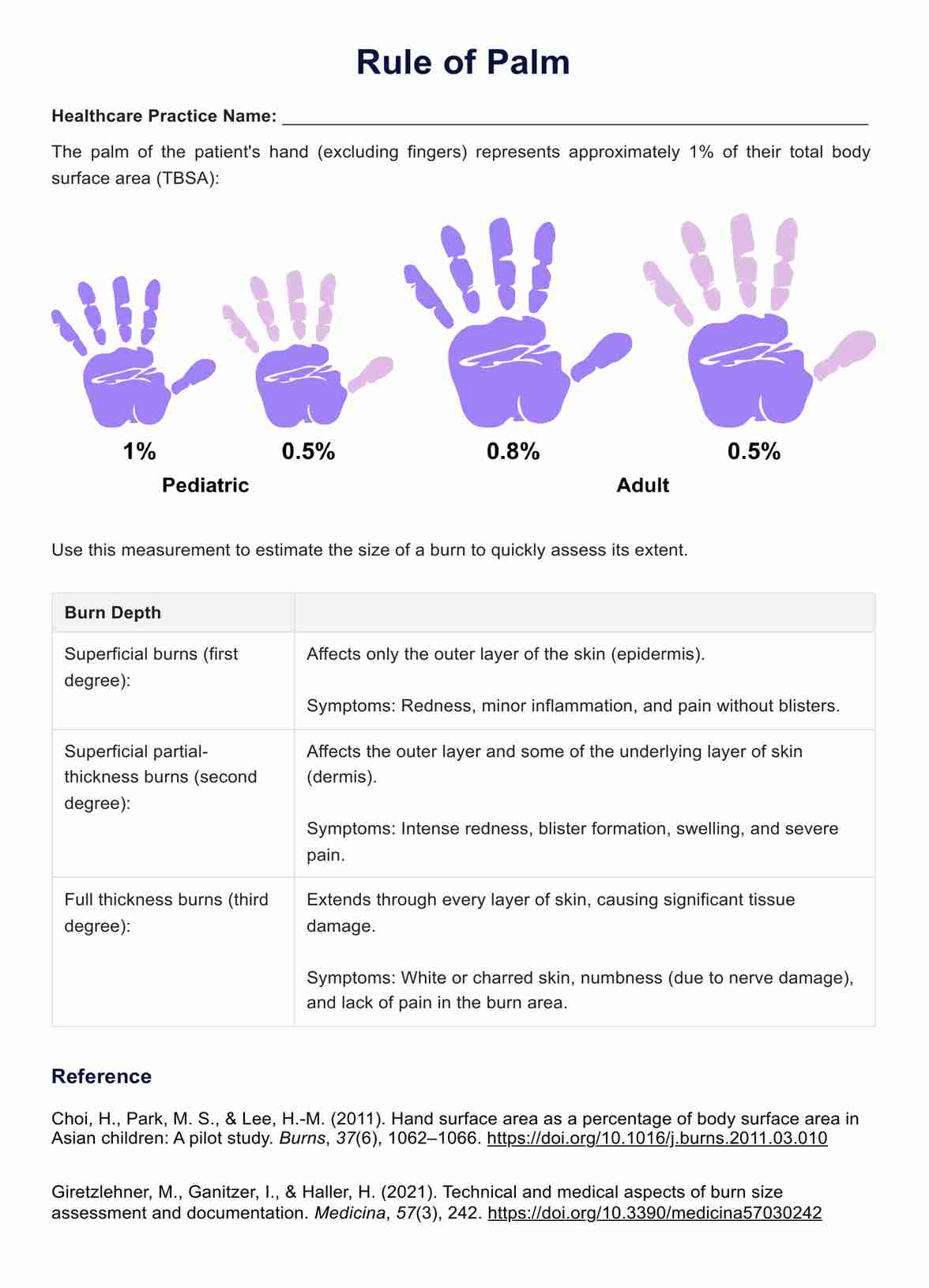The rule of palms is a method used to estimate the size of a burn injury, where the patient's palm (including fingers) represents approximately 1% of their total body surface area (TBSA).

Rule of Palm
Use our Rule of Palm template for quick and accurate burn size estimation, an essential tool for effective burn management and patient education.
Rule of Palm Template
Commonly asked questions
The 6 Cs of burn care include: Clothing, removing any non-adhered clothing around the burn; Cooling, applying cool water for 20 minutes to reduce pain and swelling; and Cleaning, using mild soap and water. Chemoprophylaxis involves applying antimicrobial agents to prevent infection, Covering uses a sterile dressing to promote healing, and Comforting entails providing pain relief and support to manage discomfort and anxiety.
The golden rule of burns is to cool the burn with running water for at least 20 minutes, remove all clothing and jewelry from the area, and cover the burn with a clean, dry cloth.
EHR and practice management software
Get started for free
*No credit card required
Free
$0/usd
Unlimited clients
Telehealth
1GB of storage
Client portal text
Automated billing and online payments











